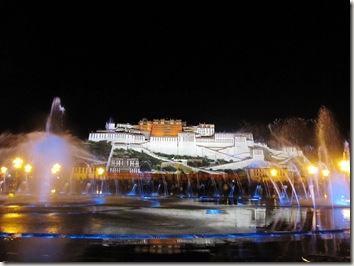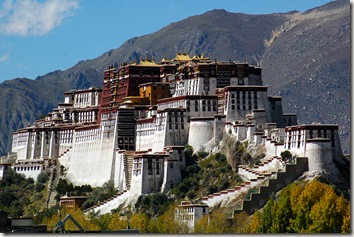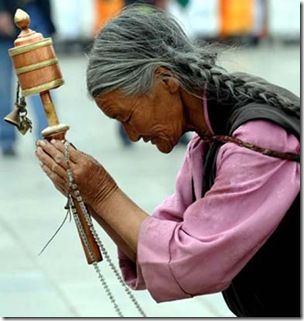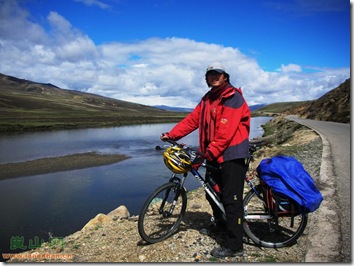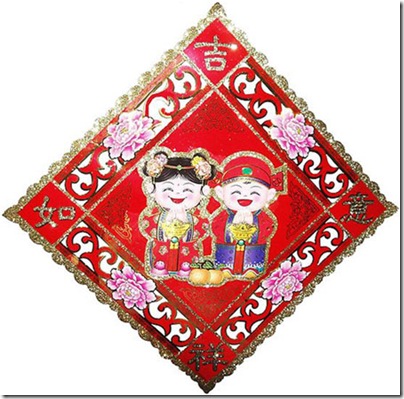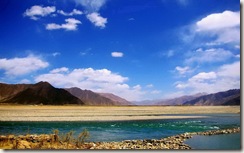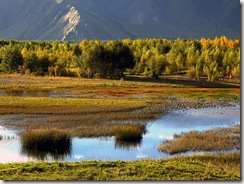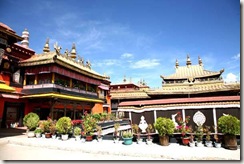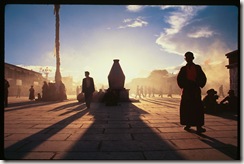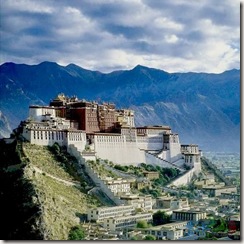Barkhor is the road which pilgrims tramped out around Jokhang Temple through centuries. Buddhist pilgrims walk or progress by body-lengths along the street clockwise every day into deep night. They comprise most of Lhasa‘s floating population. Careful visitors may find there are 4 columns, on which colorful scripture streamers are hung flying over the street. All pilgrims walk outside of them to show respect. The custom started in Tubo period (633- 877).

Over time side streets, lanes and alleys were added and the Barkhor Square. Today the pilgrims are still circumambulating the temple and the surrounding area has become a major tourist destination. This is the best place to see Lhasa’s traditional Tibetan architecture and the streets are lined by small shops selling Tibetan souvenirs such as prayer wheels, the tradition Tibetan long-sleeve ‘chuba’, Tibetan knives, jade jewellery, Buddhist statues and other religious artefacts. It is also the place to find ‘Thangka’ or Tibetan scroll paintings with themes of religion, history, literature, etc.
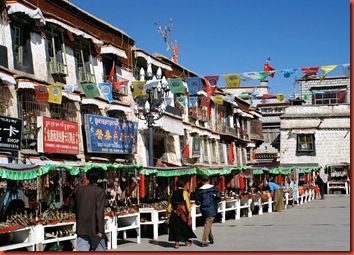
Tips:
1. You should walk in a clockwise direction along the street.
2. It is better not stay too late there. Because there are many lanes there, it’s easy to lose your way in the evening.
3. Different vendors may sell the same thing at different price. So you’d better ask several vendors and get more information of the articles. Of course, you should also know how to bargain with them.
4. According to the tradition of Tibet, the vendor will give a favorable price to the first customer and the last one in a day.
